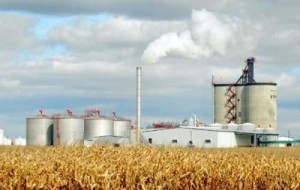 Lots of great information in this week’s Ethanol Update, including a U.S. Senator taking down food vs. fuel myths on the senate floor, the real story about U.S. ethanol demand and information on RINs and gas prices.
Lots of great information in this week’s Ethanol Update, including a U.S. Senator taking down food vs. fuel myths on the senate floor, the real story about U.S. ethanol demand and information on RINs and gas prices.
RVO announcement coming today
The Environmental Protection Agency (EPA) will likely announce renewable volume obligations (RVO) for 2014, 2015 and 2016 as called for the in Renewable Fuel Standard (RFS) at a news conference this morning. In other words, EPA will be announcing targets for how much ethanol to blend in our fuel supply. More background on this issue can be read here.
Come back to MinnesotaCornerstone.com for a rundown of the announcement after the news conference.
Grassley fact checks food vs. fuel
No matter how many times it’s disproven, the food vs. fuel myth remains a major talking point for Big Oil and Big Food as they trash homegrown biofuels like ethanol. The Minnesota Corn Growers Association has shot down food vs. fuel myths several times before.
Last week, Sen. Chuck Grassley took to the senate floor to fact check an error-filled (and cliche-ridden) op-ed in the Wall Street Journal written by the chain restaurant and chicken industry. Here’s an excerpt of what Sen. Grassley had to say:
That’s a fact: with ethanol production at record levels today, corn prices are lower now than they were in 2007. It’s been proven time and again by the EPA, USDA and others – there is no correlation between corn prices or ethanol production and retail food inflation or food prices. It’s just a fact.
Despite what Big Oil and Big food try and tell you, ethanol does not result in higher food prices. This fact has been proven over and over again and it’s time to stop giving credence to this silly Food vs. Fuel argument. You can read the entire text of Grassley’s remarks here.
Demand for ethanol in U.S. at record levels
Ethanol blending by U.S. gasoline refiners and blenders hit a record high of 13.32 billion gallons in 2014 according to the Energy Information Administration (EIA). Just a few weeks ago, EIA data showed 906,000 barrels of ethanol per day were blended with gasoline, an all-time weekly record. EIA data also showed stations offering E15 doubled in 2014 while E85 stations hit a record high.
Despite these facts, the oil industry met with the White House and took to the airwaves last week claiming that ethanol demand is down and blending requirements shouldn’t be allowed to exceed the 10 percent mythical “blend wall.” Big Oil reached these conclusions by using accounting tricks and including exported gasoline, which typically doesn’t contain ethanol, in its numbers.
Big Oil using accounting tricks and gimmicks to support an indefensible argument? The heck you say! I know, it’s a shocker that Big Oil would stoop to such levels, right?
There’s much more to this story than what we’re able to cover in this space. For the full report on how Big Oil rigged these numbers and how U.S. ethanol demand has increased, check out this great post from Geoff Cooper at the Renewable Fuels Association.
Gas prices unaffected by RINs
According to a new report from Informa Economics, Renewable Identification Numbers (RINs) had no impact on retail gasoline prices. RINs are generated by a producer or importer of renewable fuels like ethanol and bought, sold or traded by obligated parties like refiners to demonstrate compliance with the Renewable Fuel Standard (legislation that sets targets for the amount of homegrown biofuels to blend in our fuel supply).
In recent years, the oil industry has tried to link increases in fuel prices to RINs. Here’s a blurb from the study:
“Changes in prices of renewable identification numbers (RINs) did not cause changes in retail gasoline prices from 2013 through the first quarter of 2015.” The researchers concluded that “Retail gasoline prices were driven primarily by movements in crude oil prices and secondarily by changes in the spread between domestic and international crude oil prices and the level of vehicle miles driven in the U.S., which varies seasonally.
The full study can be read here.
Casey’s and E15
Want to encourage Casey’s General Store to begin offering E15 at the pump? Make your voice heard via social media. Take action by 10 a.m. today to participate in a Thuderclap campaign letting Casey’s know that you want homegrown, renewable choices at the pump. Click here for details.
Where to find higher ethanol blends
If you’re wondering where you can fill up with E15, E85 or other higher ethanol blends, go towww.mnfuels.com for a map and list of stations. You can also download the Minnesota Biofuels Association station locator app.

